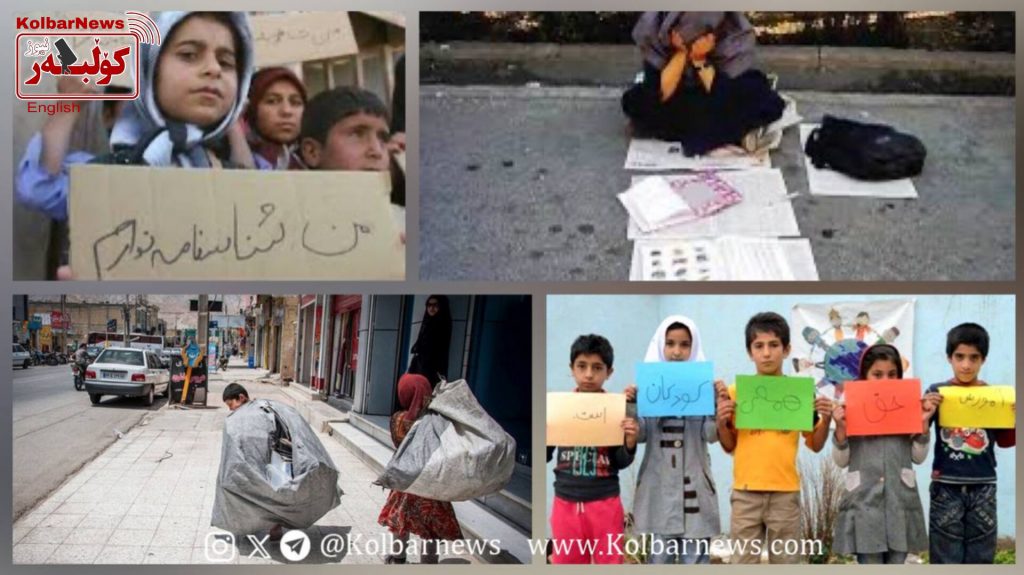
Tomorrow, Sunday, marks the first day of the new school year in Iran. Around 17 million students and nearly 4 million university students are preparing to enter schools and universities. During these days, the excitement and anxiety of children, teenagers, and young adults who have the opportunity to attend educational institutions bring a fresh energy to society.
However, data from the Iranian Statistical Center shows that in the previous academic year, 929,798 students were unable to attend school, and this number exceeds one million this year. The trend of increasing out-of-school children in Iran continues.
Official statistics indicate that more than one million Iranian children live without birth certificates. These children, or their parents, either lack official documents or do not exist in any official records. One of the most significant deprivations they face is the inability to register for school, leaving them deprived of their right to education. Their deaths are not even recorded, as if they never existed.
Children who are unable to attend school, whether documented or not, are thrust into the harsh labor market. Millions of child laborers work in workshops, brick kilns, farms, and homes, selling their labor to earn a meager living for themselves and their families. Around one million street children, who have been excluded from education, spend their days in worn-out clothes on the streets, selling tissues or washing car windows amid the exhaust fumes of countless vehicles. Others sift through trash bins to collect plastic, paper, and cardboard. If they survive the harassment of municipal authorities, they sleep under bridges, on sidewalks, or in dry canals.
Among these children, Afghan migrant children face even deeper wounds. A large number of them, due to their lack of identification or the refusal of public schools to accept them, live in slums and damp warehouses, constantly in fear of being caught by authorities.
These children, victims of unclear citizenship status and the lack of birth certificates, have been deprived of the right to life under the laws of the Islamic regime. They are denied even the most basic necessities such as healthcare, medical treatment, and education—services that are vital for the survival of these impoverished, forgotten people. According to official and unofficial statistics, the provinces of Sistan and Baluchestan, Tehran, Khorasan, Qom, and Golestan have the highest number of undocumented children, most of whom live in marginalized urban areas or impoverished regions.
Children without documentation face a bleak future, and it is evident that after being excluded from school, they are forced into the black labor market to help support their low-income families. These children, instead of enjoying their childhood, are forced to grapple with the harsh realities of life just to survive. They lose their childhood in exchange for a hard-earned piece of bread. The heavy shadow of economic hardship weighs most on their young shoulders, pulling them toward an uncertain and bleak future.
Undocumented children are never allowed to attend school, and thus, they face a difficult future. These children are not only deprived of education but also denied basic healthcare services. The growing number of undocumented families and their need for income has pushed many of these rejected children to migrate to large cities and live on the streets. A child who should be sitting in a classroom as a student instead transforms into a street child and laborer due to their lack of identification.
Having a birth certificate and identity documents, access to healthcare, education, schooling, and recreational and cultural activities, as well as adequate housing, without discrimination based on skin color, language, race, gender, religion, or nationality, are among the basic rights of children. However, under the reactionary rule of the Islamic regime, these basic rights have become a distant dream for undocumented children in Iran.

